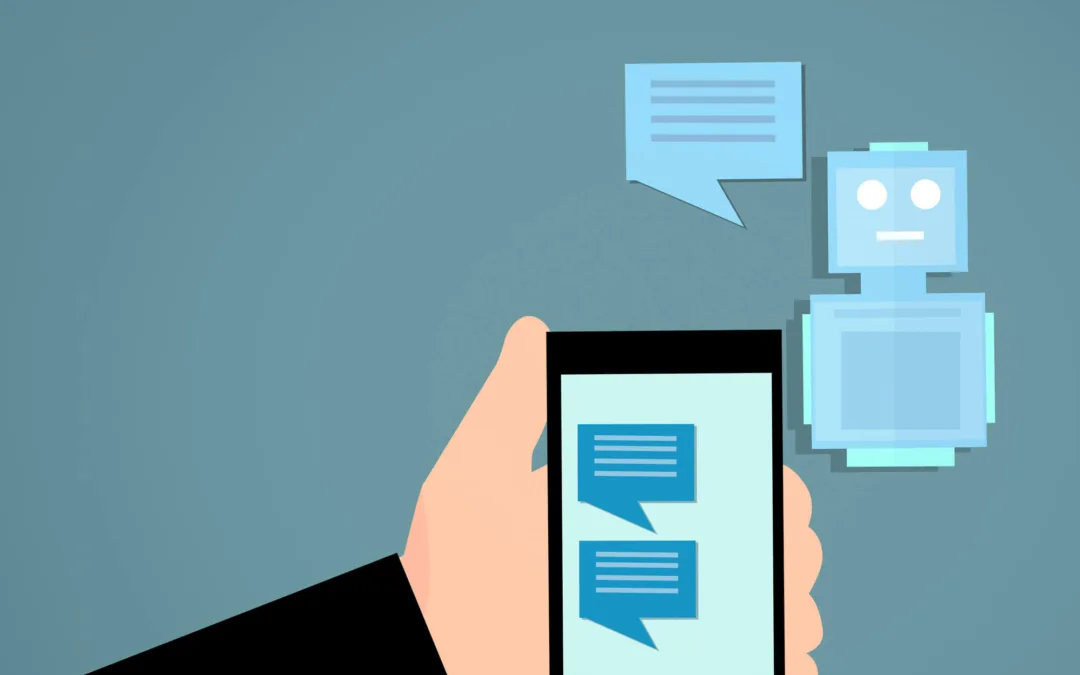Whether you’re an aspiring entrepreneur or the proud owner of an established e-commerce store, you should have heard of the benefits of chatbot copywriting by now.
A decade ago, they were nothing more than novelty experiments, but they’ve long since achieved real-world value, allowing brands globally to achieve remarkable levels of optimization and efficiency in marketing and customer support.
But because there’s still no such thing as true AI (and it’s unlikely to appear anytime soon), a chatbot is only as good as it is designed and programmed to be, and then there’s the matter of what it can say.
Since chatbots draw from sets of preset words, phrases, paragraphs, and messages, the onus is on the people implementing chatbots to provide a high-quality copy.
If you’re planning to use chatbots for your website or online store, then, what do you need to know about chatbot copywriting?
What kinds of sequence should you anticipate, and how can you polish your messages to forge excellent user experiences?
That’s what we’re going to consider here, so let’s get started.
You must break the user journey into steps
Because chatbots aren’t actually intelligent, they lack any kind of nuance. They are unable to carefully assess a situation and choose the optimal time to get involved.
Consequently, you must do as much of the heavy lifting as possible before you launch a chatbot — carefully analyzing your user journey and breaking it down into meaningful steps that can then be catered to in your chatbot actions and messages.
For example, let’s think about the process a prospective customer might follow when reaching an e-commerce store homepage:
- Browsing the homepage to get a general idea of the site.
- Selecting a specific category to investigate further.
- Heading to the internal search box to enter a particular item.
- Reading a selected product page.
- Adding that item to their cart.
- Browsing a little more.
- Leaving the website for a while.
- Coming back to review a few details.
- Leaving altogether.
You obviously do not want your chatbot choosing things to say at random. When the user is browsing your product page, for instance, what could be useful for your chatbot to do?
Perhaps it could make suggestions about related products, or provide any extra information it had, or note when the user had been reading for five minutes and give them an option to contact live chat support to get some advice.
Then, if the user leaves the website with an item in their cart and comes back, your chatbot could pop up to inform them that their item is still there, and possibly even give them a small incentive to go ahead and complete the order.
Context is utterly vital for chatbots. Fail to configure things based on context, and you will end up with a very weak and confusing tool that causes more problems than it solves.
You need to take the platform into account
Chatbots aren’t just limited to websites now. Through Facebook Messaging, in particular, you can configure chatbots to reach people through social media channels — and this can give rise to very different tonal demands.
In general, people are more likely to welcome informal language in their social apps than in their website engagement, so things like emojis can work wonders through Facebook Messenger even if they don’t quite fit with your website’s tone.
In addition, though users may be more willing to read their social app messages, they’ll also have greater demands of their relevance and significance.
A chatbot popup on a website might not be of interest to someone, but it’s unlikely to annoy them if it’s designed well (it certainly shouldn’t make any irritating sounds, for instance) — a social app message, though, can easily spark antipathy.
Why? Because we’re used to our messaging feeds being carefully curated, limited mostly to our friends, colleagues, and family members. People we wouldn’t, or couldn’t, ignore.
If someone grants your chatbot permission to enter that feed (with it having passed the review stage already), they’ll expect it to use their time well, and one ill-considered message could lead to that permission being revoked for good.
You have to protect (and reflect) your brand
In the end, it’s your brand that is going to get the most lasting value from the implementation of a good chatbot system (consider why some businesses are for sale despite looking decent and you’ll realize that a website minus a brand isn’t worth much).
Now that we’ve been through how to figure out how much copy you need and how it must fit into context, let’s cover some tips for writing good chatbot copy that reinforces your general brand:
Understand reader requirements
Depending on the situation, the reader may benefit most from some entertainment, some information, some trust-building points, or some relevant choices:
- Entertainment. If the reader is on a page that’s fairly dry, your chatbot can provide some valuable levity by telling some jokes. You need to be careful with automated jokes, of course, so go for something standard like a pun or a knock-knock joke (if it’s bad, that might even be better, as long as it’s knowingly bad).
- Information. Like a real store assistant, a chatbot can make useful points about viewed products and what else is available on a website or in a store, keeping the reader on the site and making them more likely to express interest or place an order.
- Trust-building points. People like to feel that they can trust brands. Having your chatbot bring up any guarantees you offer or your high level of customer satisfaction (for just two examples) can give the reader more reason to view you as trustworthy.
- Relevant choices. Is there a similar item to the product being viewed that will likely ship faster? The chatbot can give the user a choice to buy that item straight away. Or if the company can provide a custom package to meet specifics needs instead of a set service package listed on a page, it can mention that. The user doesn’t need to take the offered options — just having options is valuable.
To figure out what people might want, take the perspective of a new visitor, and browse your site.
At every stage, think about what a chatbot could meaningfully help you with, then use that data to create your copy.
Write for efficient impact
Lengthy content is rarely ideal for website copy. Even if you’re producing a full-length product landing page, you’re best served going for small, digestible chunks that use elements such as bullet-pointed lists or tables.
This is because a lot of browsing is done on cramped mobile screens, attention spans aren’t great, and being concise is simply more powerful.
Text provided through a chatbot, though, must be even more concise, because you’re dealing with a much smaller window and, if you’re not doing it correctly, possibly coming across as invasive. So don’t include any waffle.
Get to the point you’re trying to make, and follow through on the promise of chatbots making things more efficient.
Try not to hide artificiality
I’ve always hated it when I’ve been presented with a chatbot that won’t admit its nature. By this, of course, I mean the kind that has been programmed to pretend that it’s actually human in an effort to make people think they’re using regular live chat software.
This doesn’t work because you can always tell. We may have seen a chatbot pass the Turing test, but that particular test is quite forgiving and doesn’t actually mean all that much.
When you’re writing for your branded chatbot, avoid any pretense. Your copy should fully reflect the artificiality of the system. Now, if you want to give the chatbot a kind of personality, you can do that — just keep that clear distinction between preset AI tool and human support assistant, and provide an option to speak to a real person whenever possible.
Perhaps someday natural language processing will be good enough for a convincing fake person, but not quite yet.
Chatbot copywriting isn’t entirely dissimilar from regular digital copywriting — it just needs to be very carefully planned out and written to anticipate and meet the reader’s needs at every step of the buying process.
Be honest about what your chatbot can (and can’t) do, and people will appreciate it.
![]() Kayleigh Alexandra writes all about the entrepreneurial tips and hacks for Micro Startups, a site dedicated to giving through growth hacking. Stop by to read about the latest developments in the startup world, and take a moment to follow us on Twitter @getmicrostarted.
Kayleigh Alexandra writes all about the entrepreneurial tips and hacks for Micro Startups, a site dedicated to giving through growth hacking. Stop by to read about the latest developments in the startup world, and take a moment to follow us on Twitter @getmicrostarted.
Smarter Marketing Starts Here
Subscribe to receive the latest AI marketing and CTV ad tips that help you stay ahead - delivered straight to your inbox. Join our newsletter!

